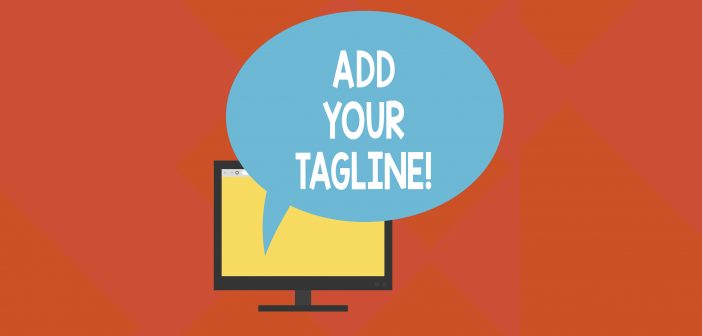Every branding project is fraught with the eternal dilemma of whether or not to include a tagline. Is it necessary? Does it add value? Does it reflect who we are?
My view has long been that a tagline is only necessary if it is memorable for the right reasons, if it makes your customers feel good about your brand.
And I’m not talking about advertising slogans here, which may be integral to a brand for a long period but are campaign related and can evolve over time. I’m meaning the line that sits with your logo for a considerable time, or even forever.
Sometimes a tagline may be needed to help explain or reinforce something you really want people to understand. After all, the words and logo of your branding can only do so much – and we shouldn’t have monumental expectations of what can be articulated in that small space, even if you include a visual element that helps tell the story. My feeling is that the best taglines are those that give you a sense of the brand’s character, or that show that it understands what I need from my relationship with them.
Sitting at the lights at the junction of Mill and Victoria Streets, I’ve admired the signage for Safewise for years. It bears the tagline ‘where safety is no accident’. I’m afraid I know little about Safewise but it tells me enough to assume they do something about workplace safety, and the tagline assures me that they are thorough and to be trusted.
Even if you don’t know what it means in English, you probably know who ‘Vorsprung durch Technik’ belongs to. Even if you don’t love it, you’re undoubtedly familiar with ‘I’m lovin’ it’. And ‘Just do it’ has become so recognisable that they don’t even use the brand name a lot of the time. But those brands now have the advantage of visibility and scale that deep marketing pockets bring. Those of us with more modest budgets have to work smarter.
There are a few tricks and tips that you can consider. Alliteration is often effective, as the sounds help make it memorable. Keeping it short is key – the three word rule often wins here.
Leveraging a sentiment that you know is important to your audience is another approach. Speights beer championed ‘Pride of the South’, appealing to regional allegiance that, even if we weren’t from down south, we could relate to it from anywhere in New Zealand. L&P’s ‘World famous in New Zealand’ takes a similar approach.
If your brand name is self-explanatory – something like a fictional Hillcrest Landscape Supplies – a tagline isn’t necessary to clarify what the business does. But if that business wants to express a particular focus or ethos, a tagline would help do that. For example, a tagline might be able to reinforce their commitment to sustainable products, or highlight personal service or client relationships.
Pak n Save promises ‘New Zealand’s lowest food prices’, offering a reassurance of value and leaving little doubt about where they position themselves in the marketplace. Equally, brands can use their tagline to subtly reinforce a premium price position.
There are also practical and visual factors to consider when developing a tagline. How does it look alongside your logo? A short logo and a long tagline – or vice versa – can be hard to work with. Your designer will need to consider how they work together across a range of applications – your vehicles, website, in small spaces, and more. Similarly, some words might seem right in terms of meaning but sound wrong when said out loud. If it’s all too hard, you’ll need to question if it’s worth it.
Call me cynical but I struggle with claims of ‘best’ in a tagline, or words like ‘favourite’. Are you? Are you, really? Apart from the fact that Advertising Standards takes a dim view of false claims, I think this approach simply lacks imagination.
Your business’s brand doesn’t necessarily need a tagline. But sometimes it’s worth undergoing an exercise to try and come up with something relevant for you, because a gem may well emerge quickly. But if it doesn’t, don’t sweat it, as it could evolve from your marketing discussions over time.
We see too many fails – location branding seems to be a regularly guilty party – that teach us to be wary of getting it wrong. If you can come up with that gem which can proudly encapsulate your priority, well done. But if in doubt, leave it out.





